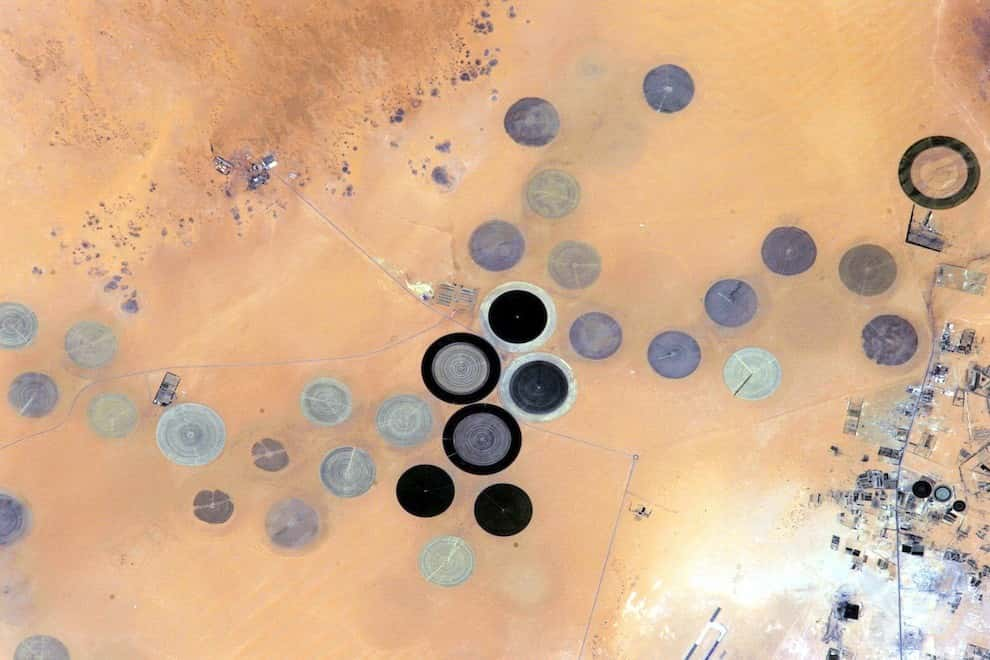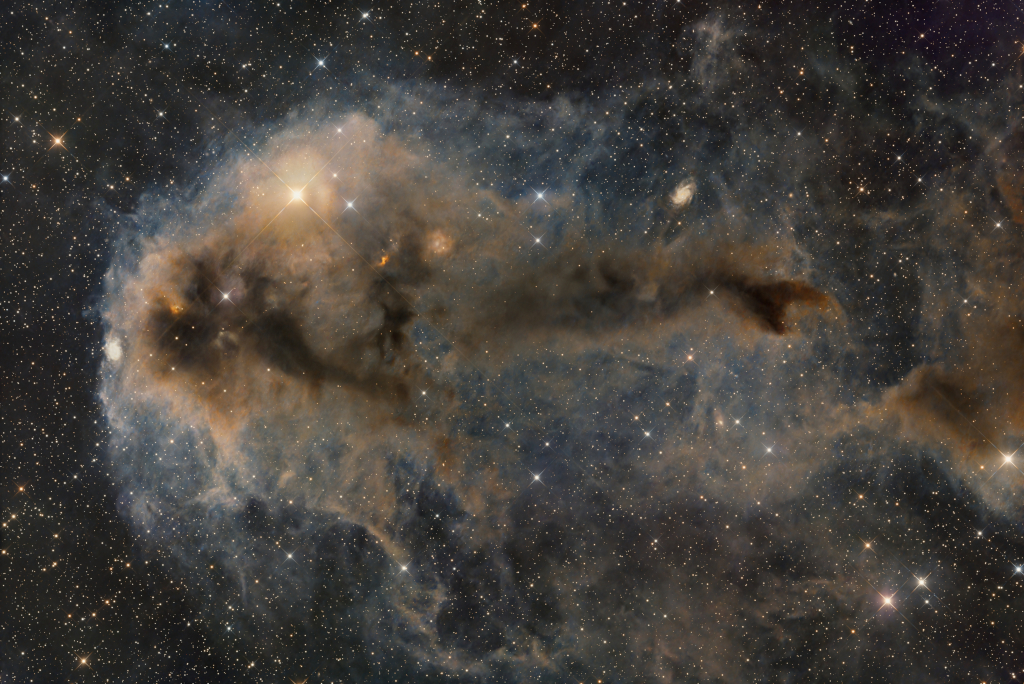Nombre total de pages vues
10/07/2025
LA TERRE VUE DU CIEL - Londres vue de l'ISS
ASTRONOMY - Lynds Dark Nebula 1251
Image Credit & Copyright: Cristiano Gualco
Explanation: Stars are forming in Lynds Dark Nebula (LDN) 1251. About 1,000 light-years away and drifting above the plane of our Milky Way galaxy, LDN 1251 is also less appetizingly known as "The Rotten Fish Nebula." The dusty molecular cloud is part of a complex of dark nebulae mapped toward the Cepheus flare region. Across the spectrum, astronomical explorations of the obscuring interstellar clouds reveal energetic shocks and outflows associated with newborn stars, including the telltale reddish glow from scattered Herbig-Haro objects hiding in the image. Distant background galaxies also lurk in the scene, almost buried behind the dusty expanse. This alluring telescopic frame spans almost three full moons on the sky. That corresponds to over 25 light-years at the estimated distance of LDN 1251.
09/07/2025
LA TERRE VUE DU CIEL - Cercles d'irrigation dans le désert

SANTé/MEDECINE - Détecter le cancer dans les analyses de sang - (2) - Une technologie qui change la donne
ASTRONOMY - A Beautiful Trifid
2025 July 9
Image Credit & Copyright: Alessandro Cipolat Bares
Explanation: The beautiful Trifid Nebula is a cosmic study in contrasts. Also known as M20, it lies about 5,000 light-years away toward the nebula rich constellation Sagittarius. A star forming region in the plane of our galaxy, the Trifid does illustrate three different types of astronomical nebulae; red emission nebulae dominated by light from hydrogen atoms, blue reflection nebulae produced by dust reflecting starlight, and dark nebulae where dense dust clouds appear in silhouette. But, the red emission region roughly separated into three parts by obscuring dust lanes is what lends the Trifid its popular name. Pillars and jets sculpted by newborn stars, above and right of the emission nebula's center, appear in famous Hubble Space Telescope close-up images of the region. The Trifid Nebula is about 40 light-years across. Too faint to be seen by the unaided eye, in this deep telescopic view it almost covers the area of a full moon on planet Earth's sky.
08/07/2025
SANTé/MEDECINE - Détecter le cancer dans les analyses de sang - Une avancée médicale qui bouleverse tout
LA TERRE VUE DU CIEL - Coucher de Soleil sur l'Amazone
ASTRONOMY - The Pleiades in Red and Blue
2025 July 8
Image Credit & Copyright: Ogetay Kayali (Michigan Tech U.) Text: Ogetay Kayali (Michigan Tech U.)
Explanation: If you have looked at the sky and seen a group of stars about the size of the full Moon, that's the Pleiades (M45). Perhaps the most famous star cluster in the sky, its brightest stars can be seen even from the light-polluted cities. But your unaided eye can also see its nebulosity -- the gas and dust surrounding it -- under dark skies. However, telescopes can catch even more. The bright blue stars of the Pleiades, also known as the Seven Sisters, light up their surrounding dust, causing it to appear a diffuse blue that can only be seen under long exposures. But that's not all. The cosmic dust appears to stretch upward like ethereal arms. And the entire structure is surrounded by a reddish glow from the most abundant element in the universe: hydrogen. The featured image is composed of nearly 25 hours of exposure and was captured last year from Starfront Observatory, in Texas, USA
07/07/2025
LA TERRE VUE DU CIEL - New York vue de l'ISS
ASTRONOMY - Interstellar Comet 3I/ATLAS
2025 July 7
Image Credit: NASA, JPL-Caltech
Explanation: It came from outer space. An object from outside our Solar System is now passing through at high speed. Classified as a comet because of its gaseous coma, 3I/ATLAS is only the third identified macroscopic object as being so alien. The comet's trajectory is shown in white on the featured map, where the orbits of Jupiter, Mars, and Earth are shown in gold, red, and blue. Currently Comet 3I/ATLAS is about the distance of Jupiter from the Sun -- but closing, with its closest approach to our Sun expected to be within the orbit of Mars in late October. Expected to pass near both Mars and Jupiter, 3I/ATLAS is not expected to pass close to the Earth. The origin of Comet 3I/ATLAS remains unknown. Although initial activity indicates a relatively normal comet, future observations about 3I/ATLAS' composition and nature will surely continue.
SANTé/MEDECINE - Cancer du foie : Une corrélation entre cancer du foie et groupe sanguin (4/6)
Selon les conclusions, les personnes de "groupes sanguins A, B ou AB ont un risque 55 % plus élevé de développer un cancer de l’estomac...

-
2022 September 26 All the Water on Planet Earth Illustration Credit: Jack Cook, Adam Nieman, Woods Hole Oceanographic Institution ; Data ...
-
2024 September 7 Small Moon Deimos Image Credit: HiRISE , MRO , LPL (U. Arizona) , NASA Explanation: Mars has two tiny moons, Phobos a...








